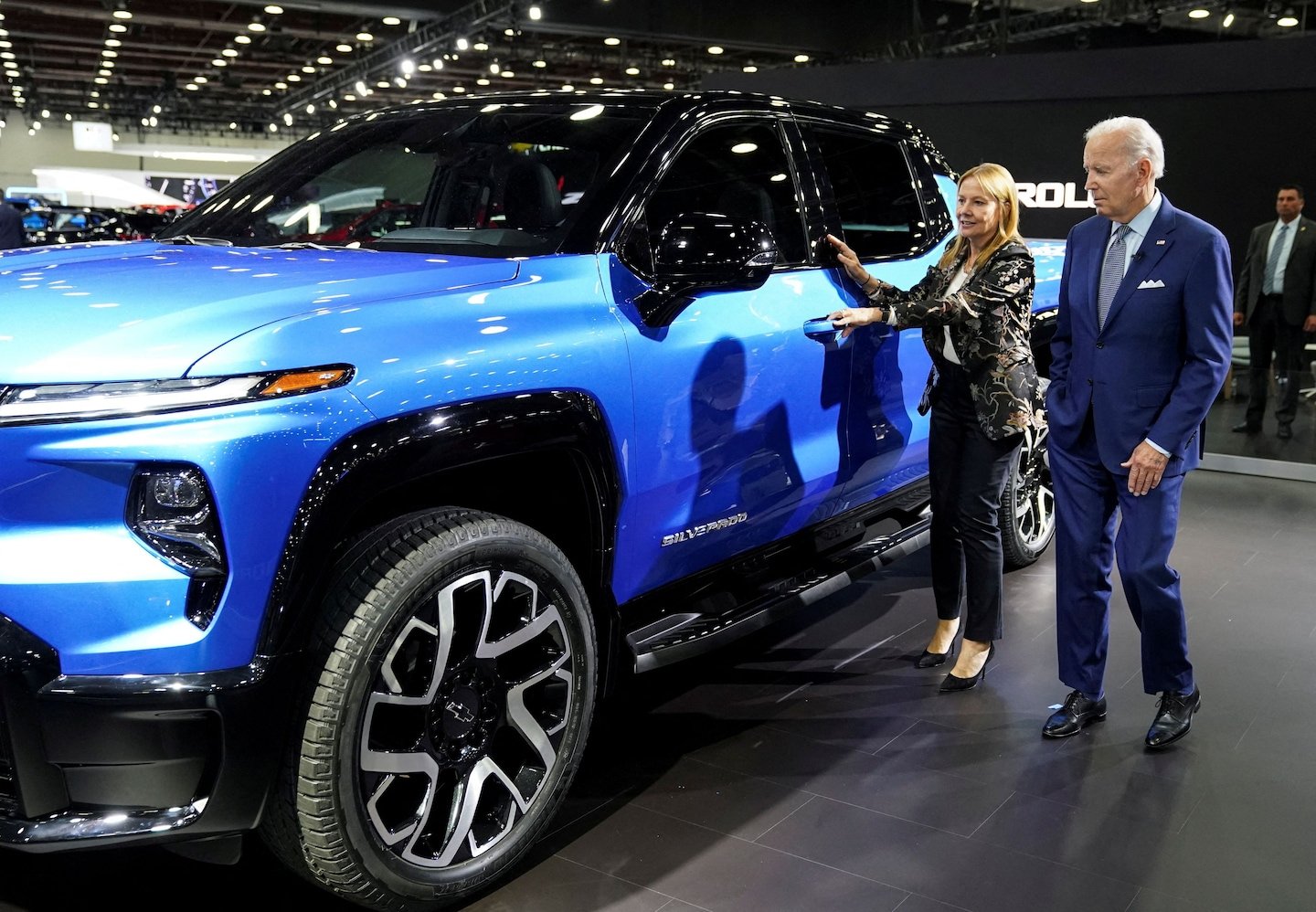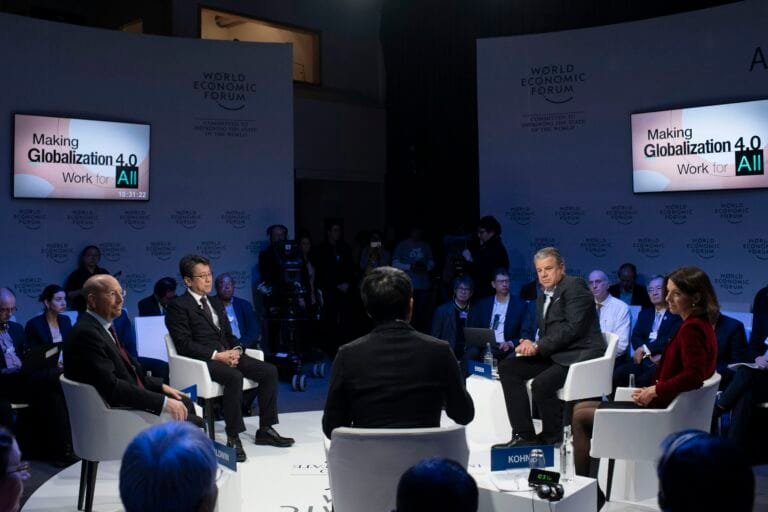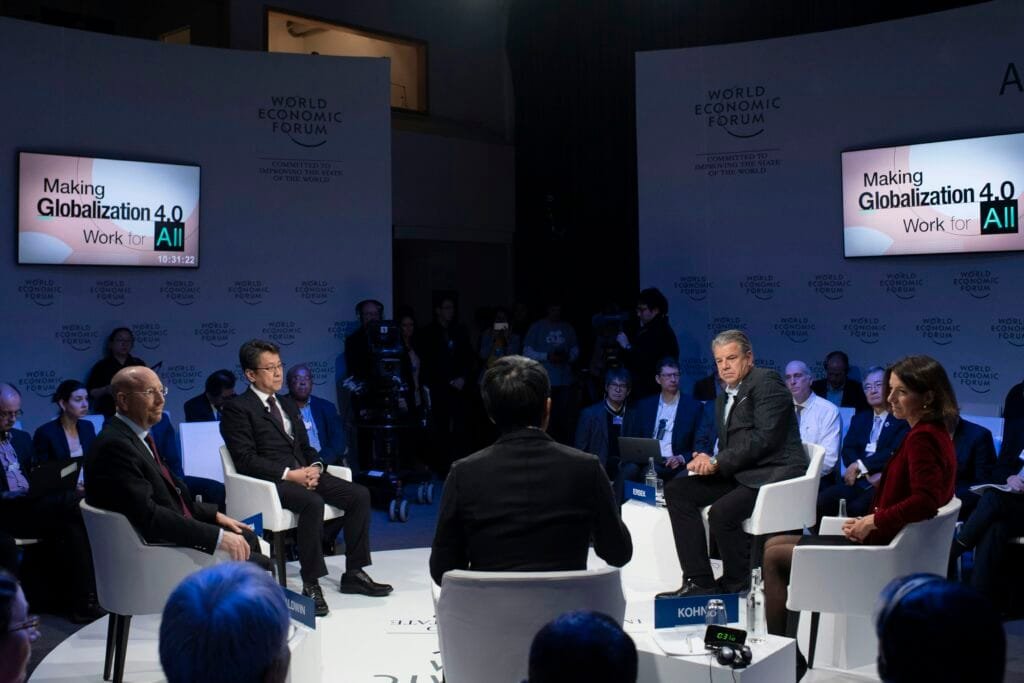The move comes as the Biden administration faces pressure on multiple fronts to weaken its electrification targets, in part because of slowing EV sales and also problems with public EV charging stations.
The New York Times first reported that the EPA is mulling such a change, which would mark a major election-year concession to automakers and labor unions. It comes as President Biden walks a political tightrope by balancing two high-profile priorities: fighting climate change and championing labor rights.
During a contentious strike in the fall, the United Auto Workers sounded the alarm that a rapid shift to EVs could come at the expense of well-paying jobs. The union has been wary of EVs because they generally require fewer workers to assemble than gasoline-powered vehicles, and because many EV plants are being built in Southern states less friendly to unions.
In April, the EPA issued a proposed rule that called for EVs to account for 67 percent of all new passenger car and light-duty truck sales by 2032. Weeks later, UAW President Shawn Fain wrote that the union was withholding its endorsement of Biden’s reelection campaign over “concerns with the electric vehicle transition.”
In January, the EPA sent the final rule to the White House for interagency review. Soon after, the UAW endorsed Biden at its annual legislative conference in Washington.
Donald Trump, the front-runner for the Republican presidential nomination, has since called Fain a “dope” on his social media site Truth Social. Trump has also incorrectly claimed that EVs cannot travel far on a single charge, and he has called for eliminating the EV tax credits in Biden’s signature climate law.
UAW spokesman Jonah Furman declined to comment for this article. EPA spokesman Timothy Carroll declined to comment on the specifics of the rule while it is under interagency review. But in general, Carroll said in an email, “EPA is committed to finalizing a technology standard that is readily achievable, secures reductions in dangerous air and climate pollution and ensures economic benefits for families.”
Dan Becker, director of the Safe Climate Transport Campaign at the Center for Biological Diversity, an environmental group, urged the EPA not to delay the timeline for transitioning to EVs. He noted that gasoline- and diesel-powered cars and trucks are one of the country’s largest sources of the greenhouse gas emissions that cause climate change.
“It will mean more pollution, more sick kids, more global warming, more oil use,” Becker said in a phone interview Sunday.
Yet delaying the EV requirements would still achieve roughly the same emissions reductions as the original proposal by 2055, according to a third person familiar with the matter, who like the others spoke on the condition of anonymity.
While EV sales in the United States have continued to climb, automakers say growth has slowed in recent months, prompting them to pause some investments. Tesla, whose workforce is not unionized, dominates U.S. EV sales. Unionized Detroit automakers lag far behind, with EVs accounting for only 4 percent of Ford’s total sales and 3 percent of General Motors’ total sales.
The availability of functioning charging stations is an issue, both for automakers and for many consumers. Although many EV drivers charge their vehicles at home, EV advocates have complained about a lack of functioning public charging stations across the country. Even in California, a hotbed of EV adoption, only 72.5 percent of all fast public chargers in San Francisco Bay Area were operational in early 2022, according to a study by researchers at the University of California at Berkeley.
The Alliance for Automotive Innovation, a trade group, has argued that the EPA regulation is too ambitious in light of the slowdown in EV sales. The alliance — which represents GM, Toyota, Volkswagen, Hyundai and others — said the rule could expose automakers to more than $14 billion in fines if they failed to hit targets for reducing carbon dioxide.
In a statement, John Bozzella, the president and CEO of the alliance, said the nation needs to pace itself in the transition to electric vehicles. He made reference to Biden’s signature climate law, the Inflation Reduction Act, which provides funding for EV development.
“Give the market and supply chains a chance to catch up, maintain a customer’s ability to choose, let more public charging come online, let the industrial credits and Inflation Reduction Act do their thing and impact the industrial shift,” he said.
In contrast, Tesla has urged the agency to strengthen the proposed rule. In public comments, Tesla called for the rule to push EVs to 69 percent of market share by 2032 and 100 percent by 2035.
The EPA sets tailpipe emissions limits in concert with the Transportation Department and officials in California, which has authority under the Clean Air Act to issue stronger pollution rules than those of the federal government. The California Air Resources Board is seeking to ban the sale of new cars running only on gasoline by 2035. In the past, more than a dozen other states have opted to follow the Golden State’s stricter standards.













